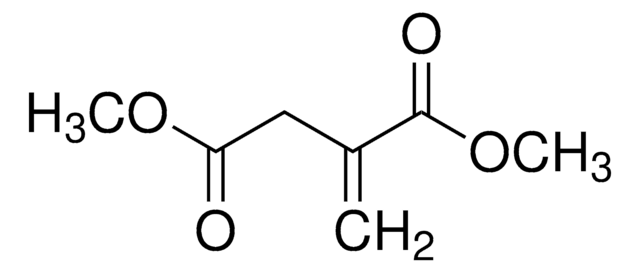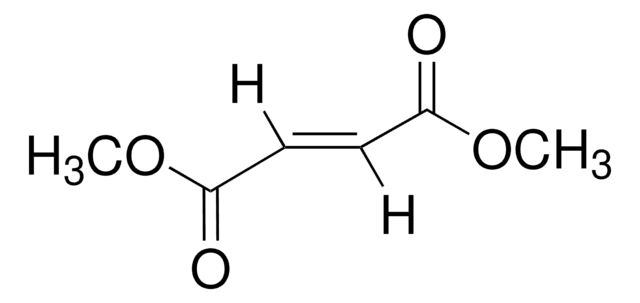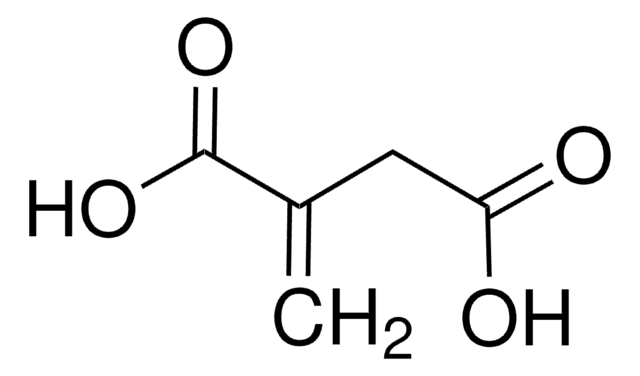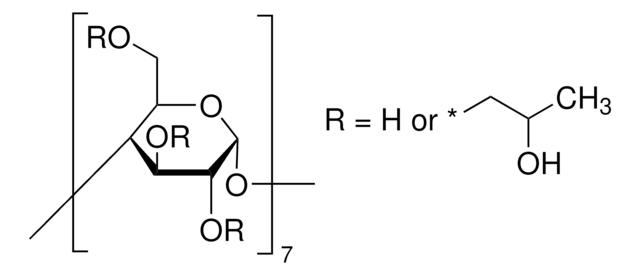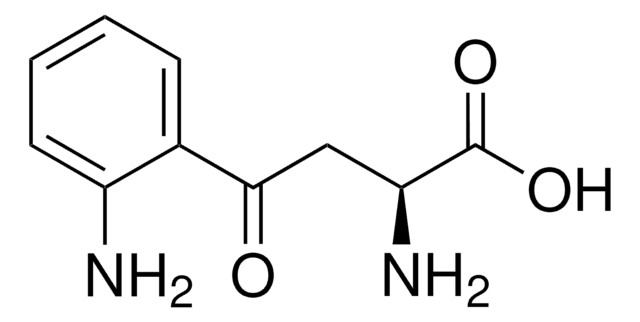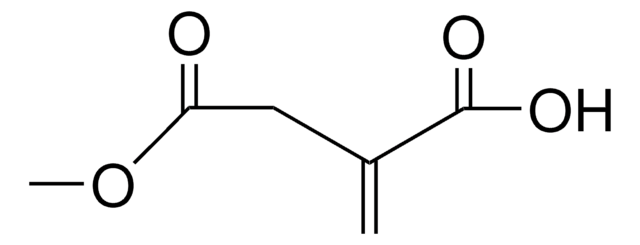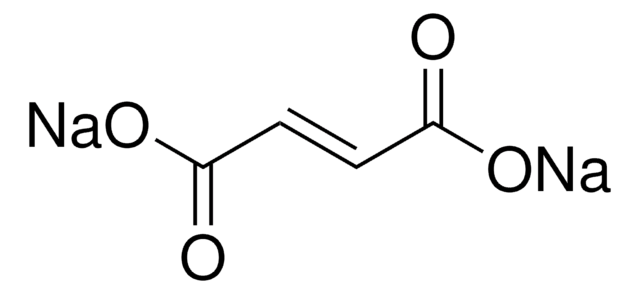SML2338
4-Octyl itaconate
≥98% (HPLC)
Sinónimos:
β-Monooctyl itaconate, 3-[(Octan-4-yloxy)carbonyl]but-3-enoate, 4-Octyl methylenesuccinate, n-Octyl 3-carboxy-3-butenoate
About This Item
Productos recomendados
Ensayo
≥98% (HPLC)
Formulario
powder
condiciones de almacenamiento
protect from light
color
white to beige
solubilidad
DMSO: 2 mg/mL, clear
temp. de almacenamiento
−20°C
cadena SMILES
OC(C(CC(OCCCCCCCC)=O)=C)=O
InChI
1S/C13H22O4/c1-4-6-8-11(7-5-2)17-13(16)10(3)9-12(14)15/h11H,3-9H2,1-2H3,(H,14,15)/p-1
Clave InChI
GIRJEIMINMHXQS-UHFFFAOYSA-M
Aplicación
- to study its anti-inflammatory effects in macrophages
- to treat bone-marrow-derived macrophages (BMDMs) for BMDM stimulation with nuclear factor-erythroid factor 2-related factor 2 (NRF2)-activating carboxylic acid compounds
- to study its effects on collagen1 expression in systemic Sclerosis (SSc) dermal fibroblasts
Acciones bioquímicas o fisiológicas
Código de clase de almacenamiento
11 - Combustible Solids
Clase de riesgo para el agua (WGK)
WGK 3
Punto de inflamabilidad (°F)
Not applicable
Punto de inflamabilidad (°C)
Not applicable
Elija entre una de las versiones más recientes:
Certificados de análisis (COA)
It looks like we've run into a problem, but you can still download Certificates of Analysis from our Documentos section.
Si necesita más asistencia, póngase en contacto con Atención al cliente
¿Ya tiene este producto?
Encuentre la documentación para los productos que ha comprado recientemente en la Biblioteca de documentos.
Los clientes también vieron
Nuestro equipo de científicos tiene experiencia en todas las áreas de investigación: Ciencias de la vida, Ciencia de los materiales, Síntesis química, Cromatografía, Analítica y muchas otras.
Póngase en contacto con el Servicio técnico